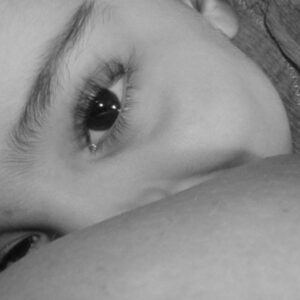If you are worried that your baby might not latch on properly, watching a few breastfeeding latch videos can be of great help.
Here, I have collected a number of breastfeeding latch video clips that I think are educational in different ways. But if you are sitting there and the breastfeeding simply isn’t working, get off your couch and call a lactation consultant immediately. (And then watch the video clips…)
Poor latching on can make your nipples very sore and your baby very frustrated, so getting help is really important. While babies have a natural instinct to latch correctly, a lot can still go wrong. If you look at the video below about the Thompson method, you’ll find very clear instructions on how to help your baby latch on in the right way.
Some situations are also more likely to make latch on a challenge, such as with a premature baby, a baby with tongue-tie, a mom with very engorged breasts, or very large nipples or breasts. Inflated/ inverted nipples can also be more difficult. But none of this makes latching on impossible! It just means that you might need some more specific support. By the way, a very tired or cranky and super hungry baby can also have problems no matter how well the breastfeeding goes in normal situations.
Remember that with the right support, most new moms can breastfeed. You can read about other common breastfeeding problems and how to solve them here.
You can also check out this awesome online breastfeeding class that will help with many of your questions and struggles!
Good luck, I hope you find the videos helpful.
Breastfeeding Latching Videos
If you want, check out all the breastfeeding information, tips and questions that I have answered over the years here. You’ll find tips on everything from babies eating all the time, to not eating at all and lots of breastfeeding and formula related questions.
Good luck! :-)

Paula Dennholt founded Easy Baby Life in 2006 and has been a passionate parenting and pregnancy writer since then. Her parenting approach and writing are based on studies in cognitive-behavioral models and therapy for children and her experience as a mother and stepmother. Life as a parent has convinced her of how crucial it is to put relationships before rules. She strongly believes in positive parenting and a science-based approach.
Paula cooperates with a team of pediatricians who assist in reviewing and writing articles.





